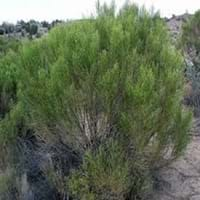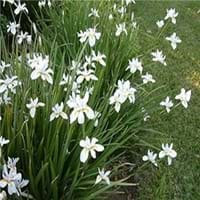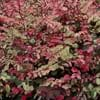Life Span
Perennial
Perennial
Type
Shrub
Tender Perennial
Origin
Hybrid origin, Southwestern United States
Southern Asia
Types
Not Available
African iris, Large wild iris, Cape iris
Number of Varieties
Not Available
Habitat
riparian zones, Semi desert, Upland
Coastal Regions, Forest margins, Slopes
USDA Hardiness Zone
8-10
9-11
Sunset Zone
7, 8, 9, 10, 11, 12, 13, 14
H1, H2, 8, 9, 12, 13, 14, 15, 16, 17, 18, 19, 20, 21, 22, 23, 24
Habit
Spreading
Clump-Forming
Flower Color
White
White, Yellow, Blue, Violet
Flower Color Modifier
Not Available
Bicolor
Fruit Color
creamy white
Green, Brown
Leaf Color in Spring
Green
Green, Gray Green
Leaf Color in Summer
Green
Green, Gray Green
Leaf Color in Fall
Green
Green, Gray Green
Leaf Color in Winter
Green
Light Green
Leaf Shape
Oblanceolate , Ovate
Grass like
Plant Season
Spring, Summer, Fall, Winter
Spring, Summer, Fall, Winter
Sunlight
Full Sun
Full Sun, Partial Sun, Partial shade
Type of Soil
Clay, Loam, Sand
Clay, Loam, Sand
The pH of Soil
Acidic, Neutral, Alkaline
Acidic, Neutral, Alkaline
Soil Drainage
Well drained
Average
Bloom Time
Spring
Indeterminate
Tolerances
Drought, Dry soil, Heat Tolerance
Drought
Where to Plant?
Ground, Pot
Ground
How to Plant?
Seedlings
Seedlings, Stem Cutting, Stem Planting
Plant Maintenance
Medium
Medium
Watering Requirements
Needs very little water
Average Water Needs, Water more in summer
In Summer
Lots of watering
Lots of watering
In Spring
Moderate
Moderate
In Winter
Average Water
Average Water
Soil pH
Acidic, Neutral, Alkaline
Acidic, Neutral, Alkaline
Soil Type
Clay, Loam, Sand
Clay, Loam, Sand
Soil Drainage Capacity
Well drained
Average
Sun Exposure
Full Sun
Full Sun, Partial Sun, Partial shade
Pruning
Cut back old stems to the ground, Remove damaged leaves, Remove dead branches, Remove dead leaves
Cut or pinch the stems, Remove damaged leaves, Remove dead branches, Remove dead leaves, Remove dead or diseased plant parts, Remove deadheads, Remove short twigs, Remove wet foliage
Fertilizers
can go long without fertilizers
Apply N-P-K
Pests and Diseases
Pests and diseases free
Red blotch
Plant Tolerance
Dry Conditions, Dry soil, Heat And Humidity
Drought
Flower Petal Number
Single
Single
Foliage Texture
Fine
Medium
Foliage Sheen
Glossy
Matte
Attracts
Butterflies
Bees, Butterflies, Flying insects, Insects
Allergy
Unknown
Not Available
Aesthetic Uses
along a porch, deck or patio, Beautification, Ground Cover, Showy Purposes, Wild gardens
Borders, Ground Cover, Showy Purposes, Water gardening
Beauty Benefits
Not Available
Not Available
Edible Uses
Sometimes
Insignificant
Environmental Uses
Air purification
Air purification, soil stabilisation, Windbreak
Medicinal Uses
anti-inflammatory, Anti-oxidant, cholesterol-lowering
Not Available
Part of Plant Used
Twigs
Flowers
Other Uses
Can be made into a herbal tea
Screen, useful as a ground cover
Used As Indoor Plant
No
No
Used As Outdoor Plant
Yes
Yes
Garden Design
Groundcover
Bedding Plant, Bog Garden, Container, Groundcover, Mixed Border, Tropical, Water Gardens
Botanical Name
BACCHARIS 'Centennial'
DIETES grandiflora
Common Name
desert broom , broom baccharis , greasewood
Butterfly Iris
In Hindi
desert broom
तितली आइरिस प्लांट
In German
Wüste Besen
Schmetterling Iris Pflanzen
In French
desert broom
Papillon Iris Plante
In Spanish
escoba del desierto
Planta del iris de la mariposa
In Greek
desert broom
Πεταλούδα Iris Φυτών
In Portuguese
vassoura do deserto
Borboleta da planta Iris
In Polish
desert broom
Butterfly Iris Roślin
In Latin
desert broom
Gloria Iris Planta
Phylum
Magnoliophyta
Magnoliophyta
Class
Magnoliopsida
Liliopsida
Family
Asteraceae
Iridaceae
Genus
Baccharis
Dietes Salisb
Clade
Angiosperms, Asterids, Eudicots
Angiosperms, Monocots
Subfamily
Not Available
Iridoideae
Number of Species
Not Available
Not Available
Season and Care of Desert Broom and Butterfly Iris
Season and care of Desert Broom and Butterfly Iris is important to know. While considering everything about Desert Broom and Butterfly Iris Care, growing season is an essential factor. Desert Broom season is Spring, Summer, Fall and Winter and Butterfly Iris season is Spring, Summer, Fall and Winter. The type of soil for Desert Broom is Clay, Loam, Sand and for Butterfly Iris is Clay, Loam, Sand while the PH of soil for Desert Broom is Acidic, Neutral, Alkaline and for Butterfly Iris is Acidic, Neutral, Alkaline.
Desert Broom and Butterfly Iris Physical Information
Desert Broom and Butterfly Iris physical information is very important for comparison. Desert Broom height is 60.00 cm and width 150.00 cm whereas Butterfly Iris height is 70.00 cm and width 50.00 cm. The color specification of Desert Broom and Butterfly Iris are as follows:
Desert Broom flower color: White
Desert Broom leaf color: Green
Butterfly Iris flower color: White, Yellow, Blue and Violet
- Butterfly Iris leaf color: Green and Gray Green
Care of Desert Broom and Butterfly Iris
Care of Desert Broom and Butterfly Iris include pruning, fertilizers, watering etc. Desert Broom pruning is done Cut back old stems to the ground, Remove damaged leaves, Remove dead branches and Remove dead leaves and Butterfly Iris pruning is done Cut or pinch the stems, Remove damaged leaves, Remove dead branches, Remove dead leaves, Remove dead or diseased plant parts, Remove deadheads, Remove short twigs and Remove wet foliage. In summer Desert Broom needs Lots of watering and in winter, it needs Average Water. Whereas, in summer Butterfly Iris needs Lots of watering and in winter, it needs Average Water.





